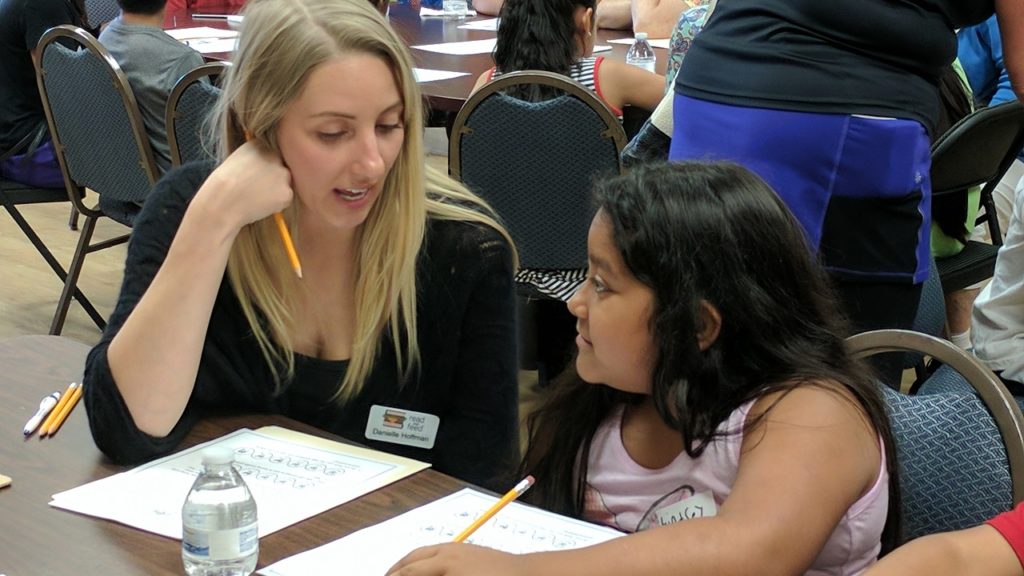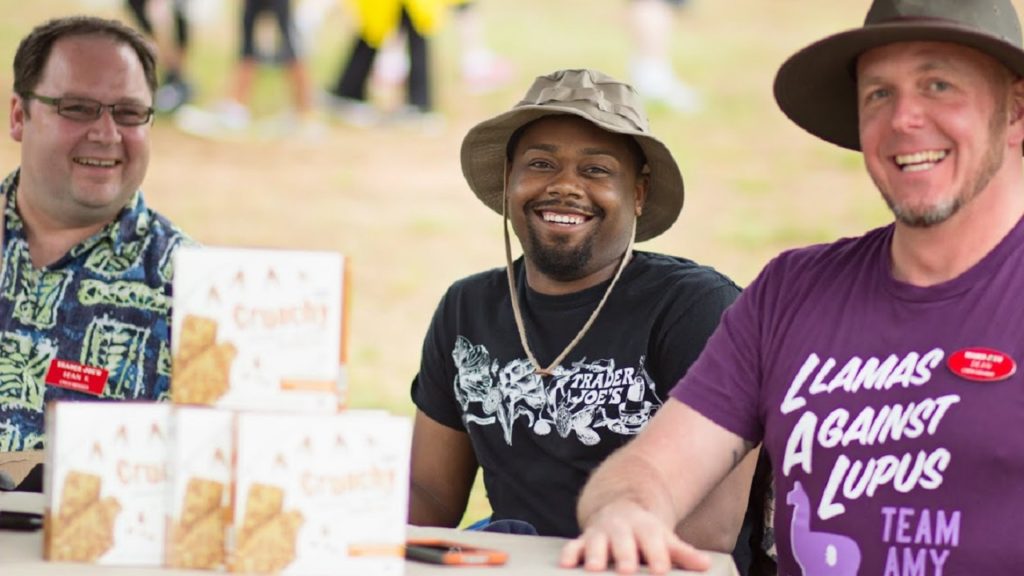 Special to the Philanthropy Journal
Special to the Philanthropy Journal
How to Engage Children & Young Adults in Charitable Giving
By Page Snow
Before we know it, the holiday season will be upon us with its annual reminders to give thanks, give to others, and give back.
How can we keep charitable giving top of mind throughout the year, especially with our children and young adults? We’ve assembled some ideas to help you cultivate their generosity, inspire their enthusiasm, and encourage their commitment not just at holiday time but all the time.
START YOUNG
Children as young as 3 or 4 can learn about the value of good works. Young people this age are just beginning to realize that the world extends beyond “me” and even beyond “Mom and Dad.” This is the age when children develop a sense of empathy and awareness of other people’s feelings, so it’s important to take advantage of this window of opportunity. The exciting discovery of their expanding world can be a magical time—a perfect opportunity to introduce children to the joys of helping others.
Model Charitable Behavior:
Young children look to their parents for clues about how to interact with the world, taking careful note of how society responds to the elderly, homeless, disabled, or the seriously ill. Watching Mom and Dad engage in charitable activities reinforces the perception that your family values acts of generosity. The more the notion “this is what our family does” is reinforced, the better. Bring your children along when you provide books to a homeless shelter, shovel an elderly neighbor’s driveway, or donate used toys and clothing.
Read Books About Giving:
A charitable mindset can be developed at story time by reading books about giving. Kids need role models and examples that inspire them. Stories with a theme of “giving back” such as B.G. Hennessy’s book, Because of You (Candlewick Press, 2005), underscore the importance of helping others:
“When you were born, there was a new person for your family to love and care for…and because of you there is one more person who can love and care for others.” – Because of You
You can also use books to answer young children’s questions about social issues, using the opportunity to clear up any misconceptions about what they’ve seen or heard, such as: “Why did that man ask you for money? Why is that lady sleeping on the park bench?”
Draw Pictures:
You can encourage young children’s charitable instincts by asking them to create pictures of what they would do to make the world a better place. Begin by asking them questions: “What things are you thankful for? What makes you happy? What makes you sad? What can you do for people who aren’t as lucky as you?”
Share Family Stories:
Children love to hear about the family’s history of giving. Share family stories from your own childhood or even further back in your family’s history. Any experience where a family member learned something about giving—how Grandpa helped neighbors down on their luck, or Aunt Lila planted a community garden—can be shared in the form of a story that will help children feel a sense of belonging to something bigger.
GROWING UP
For school-age children (7 – 12 years old), family is central. This is the age when they truly want to do things with their parents and siblings, so take advantage of this opportunity with them. Find areas of giving that genuinely excite them and enable the whole family to participate.
Start with Their Interests:
The motivation to give is often sparked by a child’s own experience. Encourage children to talk about what makes them happy or what is important to them personally, and think about ways to share these things with others. For example, one child might choose to donate a favorite shirt or blouse that she has outgrown to disaster relief. Another child might give toys to a hospital where he had his tonsils out. The more children personally identify with their donations, the more you’ll cultivate their charitable impulses.
Family Projects and Volunteering:
Family volunteering can foster a larger sense of community participation and commitment. Choose an activity that matches your family’s interests—whether you like to participate in athletic activities like bike-a-thons, swim-a-thons or charity races—or prefer to work on community projects such as cleaning up a playground, beach, or park. Participation in a community project allows kids to do good while meeting and working alongside those who benefit from their efforts.
Create Family Rituals:
Whether it’s cooking a meal for the homeless on Sundays or sharing a moment from the week where someone made a difference, regular rituals that are shared by the entire family help create a tradition of giving. Carol Weisman, the author of Raising Charitable Children (F.E. Robbins and Sons, 2006), recommends using birthdays, anniversaries, and other special occasions as opportunities to teach children the joys of giving. You can have your child phone an uncle on his birthday and ask what charitable act he’d like her to do in his honor. Or you could set aside a day to celebrate a relative’s special accomplishment or commemorate a tragedy that has touched the family. The idea is to create activities that become part of the family’s traditions.
Include Children in Your Decisions About Charitable Donations:
Since children learn best by imitation, set aside a special time to discuss whom you plan to give to and why. To make this activity more meaningful, you can point out organizations that hold special significance to the family—the hospital where Grandma stayed, or the wildlife refuge where the family hikes in the summer. Let children in on topics you are personally concerned about such as the plight of an endangered species or the demolition of a local historical landmark.
Encourage Their Own Charitable Donations:
To reinforce the idea of saving some of their own funds to help others, some families create a “Spend, Save, and Give” box with three compartments that allow children to allocate their allowance accordingly. Some families match their children’s charitable savings, so that they can do even more.
TEENS
Teens typically start asserting their independence from the family, preferring to spend time with their peers. But charitable pursuits needn’t go by the wayside at this age. As young people develop a more expanded world view, charitable giving can help them discover their place in it and their power to make a difference.
Community Service and Social Activism:
You can take advantage of teens’ growing desires to be with peers by encouraging them to join social venture organizations with friends or to make new friends by getting involved in causes they would like to explore. Many high schools require students to fulfill a civic service requirement in order to graduate (and college entrance authorities look positively on such activities). Help teens find volunteer opportunities that satisfy these requirements while enabling them to discover their own interests, like building a skate park or lobbying local officials to clean up a hazardous waste site. The idea is to find activities that build their confidence, so that they can make a difference.
Star-Power Philanthropy:
Celebrities like John Legend, Beyoncé, and Ellen DeGeneres are helping to make social action seem not only important, but exciting. Sports figures are also great philanthropic role models for teens who may be looking to heroes for inspiration. For a generation brought up in a media-saturated, brand-conscious world, don’t discount cause-related marketing efforts such as the TOMS’ “One for One” movement, Warby Parker’s “Buy a Pair, Give a Pair” campaign, or MAC Viva Glam Lipstick. Granted, each has a commercial component, but by raising teens’ social awareness, these efforts can be a springboard for their participation on the foundation.
Technology:
No one understands social networking, mobile technology, and interactive media better than this current generation. There are plenty of ways that tech-savvy teens can leverage their skills to make a difference. Get your teens involved by inviting them to promote causes by designing websites, taking photos and digital video, networking with friends across the globe, and writing, podcasting, and tweeting.
Inspiration:
Parents of teenagers should definitely look into the resources available through WE, the first-ever recipient of the Good Housekeeping Humanitarian Seal. This charitable and educational organization provides volunteer travel opportunities, school-based service learning programs, multigenerational workshops for families, and stadium-filling events (WE Days) that bring together world-renowned speakers and performers with millions of young people to celebrate a commitment to service.
COLLEGE AGE AND YOUNG PROFESSIONALS
Young adults are branching out at this stage, often living far from home and immersed in the demands of first jobs or graduate/professional schools. Time is often the most precious commodity for this age group, and their participation in charitable giving may suffer.
If you can encourage them to participate in charitable giving with their peers, however, they stand a good chance of remaining interested and involved. Remind them to explore charitable clubs on college campuses and opportunities to serve on the boards of local nonprofits.
FAMILY EFFORT
We believe that bringing family members together to make the world a better place is what family giving is all about. By involving your children in your charitable decisions and actions, you can give them the desire, confidence and skills they will need to extend your family’s commitment to “doing good” and “giving back” well into the future.
In closing, we share a final story that we feel captures the satisfaction of raising the next generation to understand the importance of charitable giving and to actively participate in it:
In a city with a rapidly growing homeless population, one of our clients found a way to directly involve his family in his efforts to lend a helping hand. He took his children shopping for basic supplies, using this opportunity to talk about what items might be needed and appreciated by people who don’t have ready access to showers, laundry facilities, etc. Together, they assembled kits that contained soap, shaving cream, razors, deodorant and other toiletries that most of us take for granted. The family kept these kits in the car and whenever they drove by someone who was living on the street, they would personally present the kit. The father remembers:
“At first, I gave out the kits while the children watched wide-eyed from the car. Over time, my kids began to yell, ‘Dad, Dad, stop the car; there’s a homeless person on the corner!’ They would then jump out and offer the kits themselves. The recipients were thrilled by their genuine concern and attention. I was delighted to see the social awareness this activity provided my children. I have no doubt that they’ll grow up to make a real difference in people’s lives.”
Page Snow is chief philanthropic and marketing officer at Foundation Source, which provides comprehensive support services for private foundations. She earned a BA from Sarah Lawrence College and an MA from the University of Pennsylvania. Contact her at psnow@foundationsource.com.





